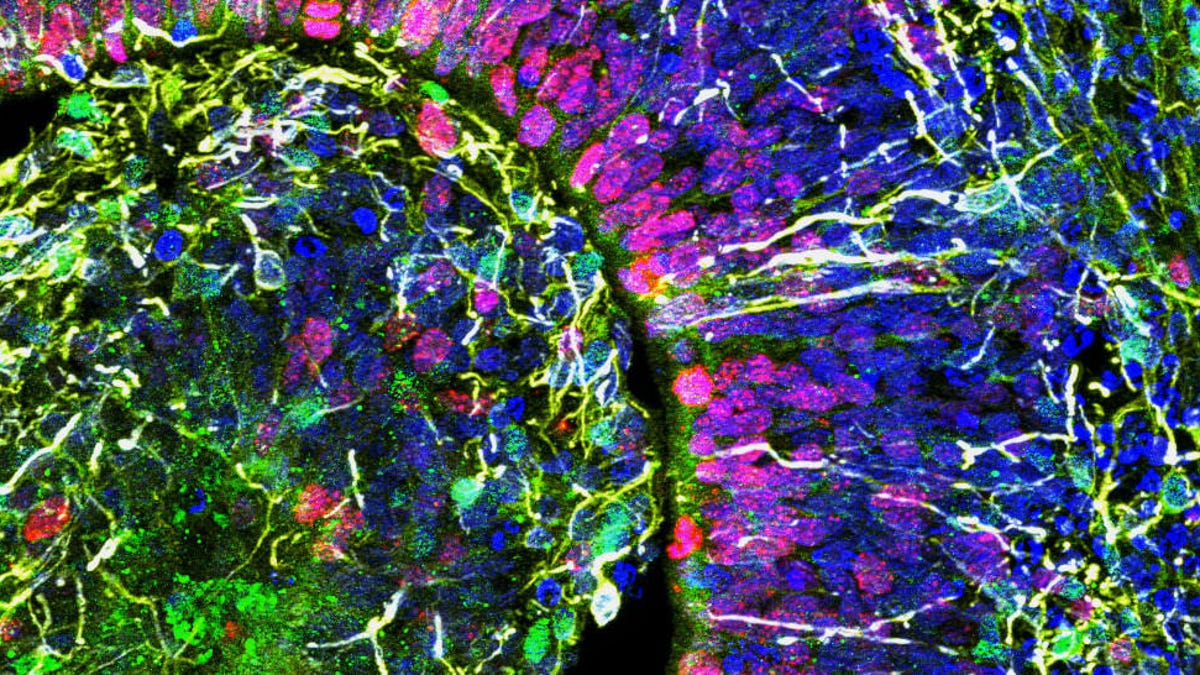Human-like brain waves detected in mini brains grown in a dish
The organoids formed networks and produced electrical activity resembling that of six to 10 month old infants.

A cross-section of the lab grown mini-brains, with each color representing a different type of brain cell.
Scientists have successfully grown mini brains that, for the first time, produce brain waves resembling those seen in embryos and preterm infants. Researchers at the University of California, San Diego (UCSD) created the pea-sized "brains" by growing up stem cells in a petri dish and testing their activity and gene expression over 10 months. They hope the mini brains will enable them to study early brain development.
The study, published in the journal Cell Stem Cell on Thursday, is by the same research group that previously showed they were able to grow Neanderthal mini brains in the lab. This time around they've stuck to Homo sapiens, coaxing human stem cells into becoming brain cells by placing them in a petri dish that simulates the environment of early brain development. The 3D mini brains, known as "organoids," then mature and create cellular networks of connected cells -- an important component of real brains that allows electrical signals to zip around.
"We are one step closer to have a model that can actually generate these early stages of a sophisticated neural network," said Alysson Muotri, a molecular biologist at UCSD and author on the new study, in a press release. Muotri's team have been working with brain organoids for a number of years, slowly working towards building a brain that will act as a model for future study. Currently, their model is about a million times smaller than an adult human brain.
"You can use brain organoids for several things, including understand normal human neurodevelopment, disease modeling, brain evolution, drug screening, and even to inform artificial intelligence," Muotri said.
To assess the electrical activity of the lab-grown brains, the team stuck electrodes into their culture dish. They found evidence for activity in the mini brains at two months and rhythmic, constant activity by six months.
A machine learning algorithm, trained on a dataset of 567 electrical signal recordings generated by 39 premature babies aged between six and 10 months of age, was then fed the mini brain electrical signals. It successfully predicted how many weeks old the organoids in the petri dish were, demonstrating that they may mimic normal, early brain development.
While this doesn't suggest the brains-in-a-jar and infant brains are functionally the same thing, it does provide a stepping stone for scientists to test brains that are more significantly advanced than previous models and ones that accurately replicate the human condition better than animal models can.
Of course, there are ethical implications of rebuilding a brain. One of the most thought-provoking philosophical scenarios is the "brain in a vat" experiment, which outlines a condition where a brain hooked up to a supercomputer and receiving electrical signals might still think it's really alive, even though it only exists as a brain... in a vat. It's kind of mad scientist Matrix, if you really think about.
The study doesn't shy away from the potential ethical implications of creating miniature brains and Muotri himself says that it's up to us to decide where the limit is. For now, you shouldn't be worried about these brains-in-a-dish achieving sentience and somehow sensing they're being experimented on. Muotri is convinced there's no evidence they have any form of consciousness and the brain waves the team has seen may not even have anything to do with the activity in real brains.
Originally published 8:15 a.m. PT

